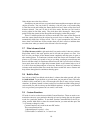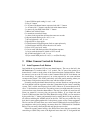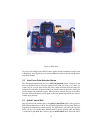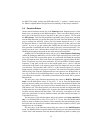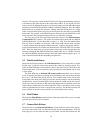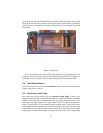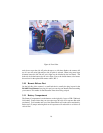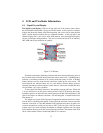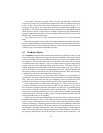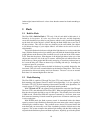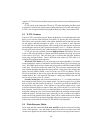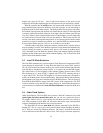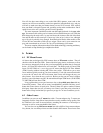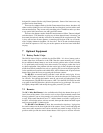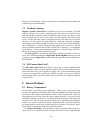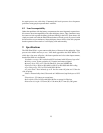You will also have more things to set on the flash (ISO, aperture, zoom) and on the
camera you will have to manually set the lens aperture to what the flash says, and you
will have to make sure that your shutter doesn’t exceed 1/125 second. Still, with all
that, auto flash is a bargain if power and versatility are the main considerations. But if
speed & ease of use are a priority get an EX series Speedlite.
The most important consideration with non-dedicated flash units is the sync volt-
age. You must test this with a good volt meter (at least 20,000 ohms per volt). With the
flash charged up & ready to fire, lay one lead across the contact at the side of the flash
foot and the other on the center pin. Canon says it has to be 6 volts or less, although
up to 10 volts is probably close enough. Some flash units like the older models of the
Vivitar 283 have more than a 200 volt sync trigger. These can fry your camera in one
pop, and accumulated use of even a 20 volt sync could damage your camera.
The most complete information about Canon flash technology, metering and theory
can be found at: http://teladesign.com/photo/eos-flash/
6 Lenses
6.1 EF Mount Lenses
All lenses that are designed for EOS cameras have an EF mount on them. They all
should work with the Elan II/IIe. Some older third party lenses are known to cause
the camera to temporarily lock up due to an incompatibility problem that is discussed
below. All Canon EF mount lenses will work fine. The better grade of Canon USM
lenses (28-105 USM, etc.) use a ring type AF motor that allows Full Time Manual
(FTM) focusing without selecting MF on the lens switch. FTM allows you to auto
focus and then quickly touch up your focus manually. Used with custom function #4
to move the AF start to the AE Lock button, these lenses will change the way you
take pictures. Or at least the way you focus. Before you buy one of Canon’s cheaper
lenses try one of the better versions. Be warned that cheaper USM lenses (28-90 USM,
75-300 USM) will not allow FTM.
In my opinion there are no good reasons to buy a cheap third party lens with any
Canon EOS camera. There are too many incompatibility problems and they are no
better than Canon lenses of equal price. However there are quite a number of better
third party lenses that can save you money over Canon’s good but pricey selection of
better lenses. Keep in mind that you get what you pay for. At least sometimes you do.
6.2 Other Lenses
In addition you can use any T mount lens with a T mount adapter ring. T mounts are
frequently used for cheap mirror lenses that have nearly worthless image quality. But
the T-Mount is also used for macro bellows, attaching the camera to a microscope or
telescope as well as some worthwhile older lenses.
You can also use any M42 screw mount lens with a M42 to Screw mount adapter.
Very decent, low cost fisheye lenses are often found in M42 mount. These lenses were
22



